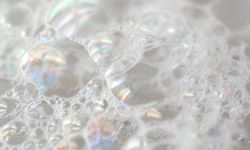Whether you want to protect the environment or protect your clothes from wear and tear, high-efficiency washing machines are picking up momentum in the marketplace. Although they tend to cost quite a bit more, high-efficiency machines are guaranteed to save you some cash on your electric and water bills, and they're widely regarded to get clothes cleaner than traditional washers.
In the U.S., the washing machine revolution began in the mid-1990s, when the Department of Energy (DOE) updated its standard of power consumption for household appliances and the federally sponsored Energy Star program began certifying washing machines. According to the Soap and Detergent Association, about 15 percent of American households had made the switch to energy-efficient washers by 2005.
Advertisement
Efficiency, under the new guidelines, refers not only to the amount of electricity it takes to power the washing machine itself; it's also a measure of the amount of energy used to heat the water and the energy needed to dry the clothes. Washing machines score points by using less water and by getting the clothes dryer in the spin cycle, so that they don't need to spend as much time in the dryer.
The American Association of Textile Chemists and Colorists reports that, on average, 80 percent of the energy used by a washing machine goes toward heating the water, so it makes sense that high-efficiency models use less water. Because they use less water, high-efficiency washers require special laundry detergent that is specially formulated to produce fewer suds than normal detergent -- leaving no residue on clothes.
Because of lower water levels, clothes tumbling in and out of the water naturally create more suds than traditional washing machines. If you use normal detergent in a high-efficiency washer, it could produce too much suds, and possibly even flood the machine. Most major laundry detergent manufacturers offer high-efficiency products, and they're clearly marked with an "HE" label.
Read on to learn about how washing machines are constructed and some of the costs and benefits of purchasing a high-efficiency washer.
Advertisement

